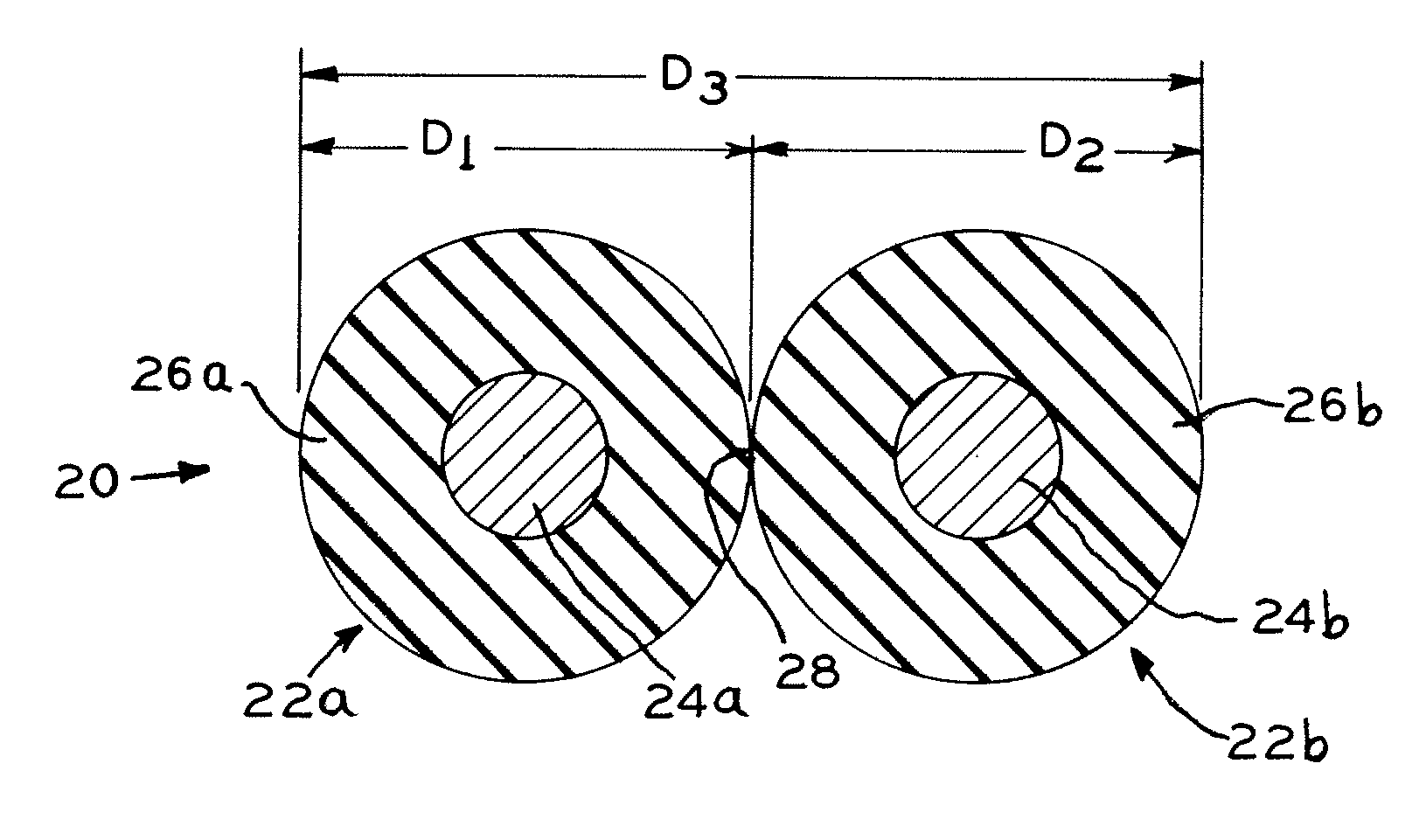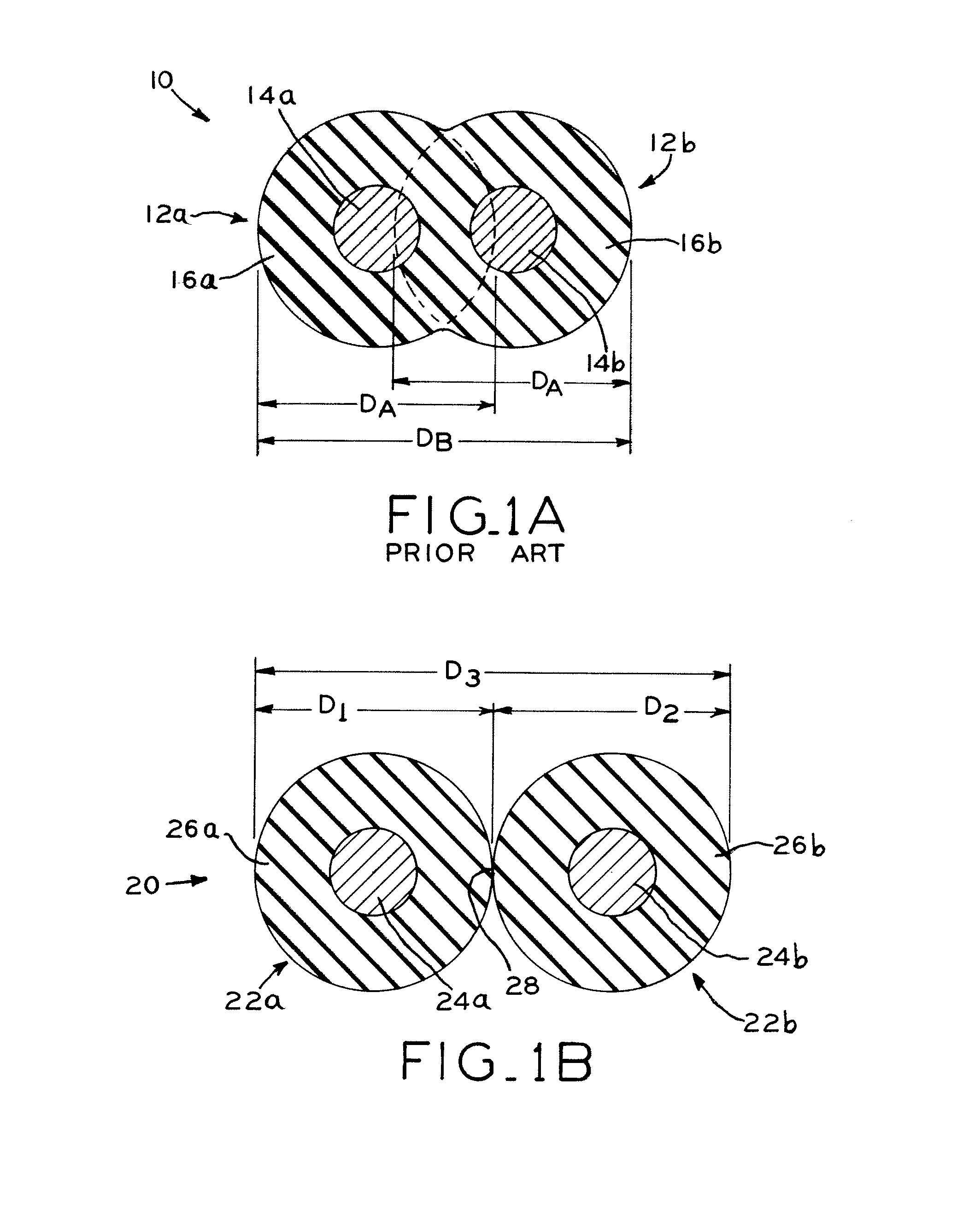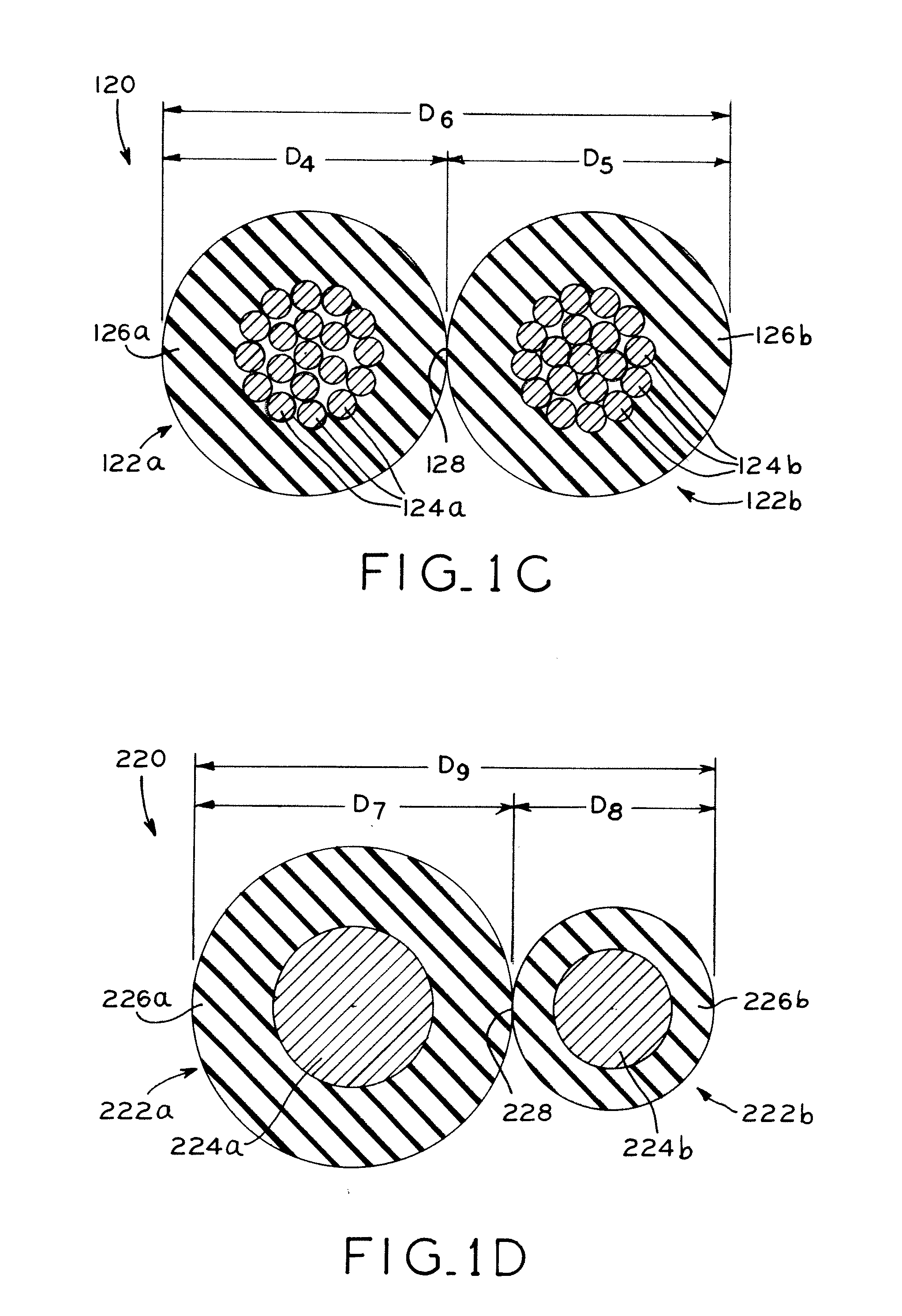Method for fusing insulated wires, and fused wires produced by such method
a technology of fusing wires and insulated wires, which is applied in the field of fusing wires and fusing wires produced by such methods, can solve the problems of not always desirable method, difficult, if not impossible, to avoid deformation of insulation coatings, and achieve low pull-apart strength, low cost, and high degree of retained integrity
- Summary
- Abstract
- Description
- Claims
- Application Information
AI Technical Summary
Benefits of technology
Problems solved by technology
Method used
Image
Examples
example 1
Fusion of Wire Pairs Made from 316LVM, 35N LT®, and Pt / 10% Ir Conductors Having ETFE Coatings
[0094]In this Example, wire pairs were fused using the above-described apparatus. The wires had coatings formed from an ethylene tetrafluoroethylene copolymer (ETFE) and had outer diameters (D1 and D2) of 0.0121 inch (0.0307 cm). The spacing between the apexes 54 of grooves 52a and 52b of pulley 50, and the spacing between the apexes 60 of grooves 58a and 58b of pulley 56, were each 0.09 inch (0.2286 cm).
[0095]As set forth in Table 1 below, the wires had conductors made from 316LVM stainless steel, 35N LT® (an MP35N alloy available from Fort Wayne Metals Reserach Products Corporation of Fort Wayne, Ind.), and an alloy of 90% platinum / 10% iridium (Pt10 / Ir). Seven runs were conducted, each using two wires of the given construction and under the conditions set forth in Table 1 below. In each run, a laser micrometer measurement device was used to measure the combined or major diameter D3 of the ...
PUM
| Property | Measurement | Unit |
|---|---|---|
| diameter | aaaaa | aaaaa |
| diameter | aaaaa | aaaaa |
| diameter | aaaaa | aaaaa |
Abstract
Description
Claims
Application Information
 Login to View More
Login to View More - R&D
- Intellectual Property
- Life Sciences
- Materials
- Tech Scout
- Unparalleled Data Quality
- Higher Quality Content
- 60% Fewer Hallucinations
Browse by: Latest US Patents, China's latest patents, Technical Efficacy Thesaurus, Application Domain, Technology Topic, Popular Technical Reports.
© 2025 PatSnap. All rights reserved.Legal|Privacy policy|Modern Slavery Act Transparency Statement|Sitemap|About US| Contact US: help@patsnap.com



